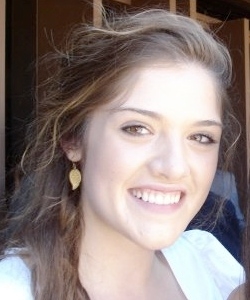“"So you're not a real Catholic.”" My host brother Rici said this definitively, as we sat on his porch eating leblebi (roasted chickpeas), overlooking the neighborhood mosque while techno beats drifted up from a party boat in the harbor. I nervously fingered the Benedictine cross that's omnipresent on my wrist and struggled with how to respond. Before I could compose my thoughts, he continued. "“It's okay though, because Turks aren't real Muslims either. The other Muslims tell us so, since we don’t obey all the rules just like you don't obey all the Catholic ones—we're both fake. For example, if I was a real Muslim, I couldn't even touch my dog. Come here, Toti.”" His puppy Toti trotted over, wolfed down the leblebi Rici proffered, then hopped into my lap.
The fact that Rici considers people ‘fake’ in their religious practice highlights a question I’ve been struggling with since my arrival in Turkey. How do individuals define their religious identity, especially when there’'s such a paradoxical relationship between religion and the state, and accusations fly about the ‘reality’ of one’'s faith? My time thus far in Turkey has revealed that while statistically the country appears religiously homogeneous, there is a wealth of difference in the ways individuals practice religion, and religious identity often mediates one’'s relationship with the state.
Turkey is 99 percent Muslim; it is also a laicist state. Ideologically there is a strict separation between government and faith, but the state fully funds a ministry of religion, the Diyanet; it also financially supports the country’s 70,000 mosques, along with a few hundred churches and synagogues. The permits that all residents are required to carry list their religion right next to birth date and home address. Additionally, the state controls operations at a number of religiously significant historical sites such as Aya Sofia, Eyup, and Rumi’'s tomb; and guards will step in if visitors are acting ‘too devotional.’ For example, at the tomb of Rumi, a famed Sufi poet and mystic, I witnessed guards chiding many women who had stopped to pray and were openly weeping. The dividing line of ‘appropriate behavior’ for veneration seems murky, especially when these religious sites are examined in context with political memorials, such as the tomb of Ataturk. Ataturk, father of the Turkish republic, is omnipresent in Turkish life. At his tomb, displays of adoration similar to those observed at religious sites went on unchecked. This complicated relationship between government and religion is constantly evolving, influenced by the various nuances and disparate factions within each.
On September 12, there was a popular vote on a referendum containing amendments to the constitution. The controversial majority AK Party put forth the referendum, and in doing so was accused of attempting to institute Seriat (religious) law. Courts unsuccessfully attempted to both block the referendum and dissolve the party. Ardent campaigns with fervent supporters on both sides swept the country; one couldn’t walk down the street without seeing signs proclaiming EVET! (Yes) and HAYIR! (No). Seventy-two percent of the population showed up to vote, and the referendum passed, with 58 percent voting yes. A particularly controversial item in the referendum included a repeal of the ban on women wearing headscarves to universities (64.3 percent of women in Turkey cover), and many commentators called the referendum ‘a vote on religion’'s presence in government.’ Reviewing the demographics of voters reveals paradigmatic realities about one’'s religious beliefs informing political choice and the tremendous regional differences in voting habits—the socioeconomically disadvantaged eastern regions tend to be more fervently religious, while wealthy coastal enclaves lean towards the secular.
Nationally, the country is overwhelming Muslim, but this does not result in uni-vocal faith and practice, or a binary of ‘real’ and ‘fake. Rather, vast pluralities of religious identities fall within this umbrella term. There are a myriad of intertwined factors contributing to the formation of an individual’'s religious identity in Turkey—gender, geographic location, education, socioeconomics, ethnicity, etc. The plethora of numbers and statistics used to quantify religion can overwhelm, and amidst these facts is the daily reality lived by tens of millions of people. Moreover, Turkey is seeking EU accession amidst strife over what it means to be European, and indeed, whether differing religious identities present a challenge to community. Even within Turkey, views range across a broad spectrum: some find Turkey’s Islamic identity to be overwhelming, others declare it is not Muslim enough. What uni-vocal vision of Islam are these judgments based on?
Defining one’'s religious identity amidst these competing, often contradictory factors proves to be a significant challenge. In my experience, there are as many particularities in one’s religious identity as there are acceptances of their creeds and’ universalities. During Ramadan, some waited for iftar to break fast while others drank Raki by daylight. In the Ottoman era, sultans outlawed certain Sufi sects. Until September, the religious expression of some women was banned at university. All of these signify a tremendous difference in conceptions of religion—but rather than categorize some as ‘real’ and others ‘fake’, or blanket them all under a common term without respect to intricacies, it is key to recognize the particularity of each individual’'s religious identity, and the role that identity plays in informing one’'s actions.

